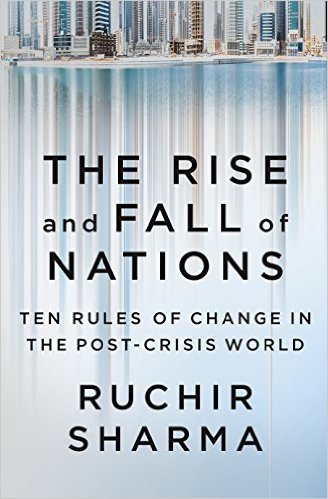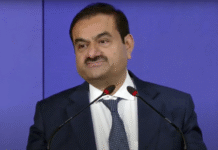By Anjali Ojha
New Delhi– The Indian economy lets down both optimists and pessimists, with several positives like a drop in crony capitalism and reforms push but also some concerns like increasing protectionism, says Morgan Stanley’s principal tactician, economist Ruchir Sharma.
In an interview to IANS, the chief global strategist for one of the largest financial services firms that manages around $1.5 trillion in assets, also says while Prime Minister Narendra Modi’s government was voted to power due to resentment, it could have done more given the mandate it got.
 Sharma, who has authored a new bok — “The Rise And Fall Of Nations: 10 Rules Of Change In The Post-Crisis World” — says if there is one factor that stands out in India’s favour it is the inflow of foreign direct investment, which touched a record level of $51 billion last fiscal.
Sharma, who has authored a new bok — “The Rise And Fall Of Nations: 10 Rules Of Change In The Post-Crisis World” — says if there is one factor that stands out in India’s favour it is the inflow of foreign direct investment, which touched a record level of $51 billion last fiscal.
“My favourite line in the book is that India disappoints both optimists and pessimists,” Sharma says during the interview, and adds when hopes run high, there is disappointment, but when the country manages to avoid a crisis, like it did in in 2013, there is optimism.
Sharma also speaks about the perils of globalisation losing charm and localisation taking over.
“In India today, one of the big problems is that globally, the number of protectionist measures has gone up significantly in the post crisis world — I call it ‘BC’ and ‘AC’ or ‘Before Crisis’ and ‘After Crisis’ world,” he says.
“The number of protectionist measures India has taken is very significant. But what has happened in India currently is the fact that India is at the forefront of it. No country has taken more protectionist measures than India,” he said.
“I think its not a positive sign because at the end it is the consumer who gets hurt.”
Asked about the Modi government’s performance, Sharma seeks to put his opinion in context, and says economic reasons played a key role in the mandate for the National Democratic Alliance (NDA) in the 2014 elections.
“Back then there was resentment at things like crony capitalism, corruption and high inflation. One thing we really underestimate is how much a killer high inflation can be for a government. Because that really hurts the poor the most,” Sharma says.
“Now, compared to what we expected, it is a little disappointing. But the incremental reforms are better (in India) than many parts of the world where there are no reforms,” he says. “But there has been a huge increase in FDI. Among the major economies India is at the top.”
Sharma also feels India has come a long way from the time when the success of businesses was dependent upon the relationship of its top brass with ministers and government opfficials.
“The good thing in India is crony capitalism seems not to be doing well now — compared to last decade when you saw a massive increase. The value of crony capitalists has significantly gone down over the last 5-6 years. That is something I find positive.”
On Prime Minister Modi’s “Make in India” programme, Sharma says it sounds good, but was also too early to gauge its success. Nonetheless, he feels, despite the shrinking value of global exports, there is space for countries ike India to become manufacturing hubs.
“All I know it is a very tough environment for manufacturing and exports globally. The world is in doldrums. Exports are doing very poorly, global export growth has virtually come to a halt,” he says.
“But China is vacating the manufacturing space, particularly the low-end space. And that share is going to countries like Vietnam, Bangladesh, and even Cambodia. I wish more of that came to India. Huge domestic market advantage is also there (in India).”
Speaking further on the global scenario, Sharma says the next crisis may start from China.
“It is because of the debt that China has taken. Last 6-7 years, the amount of debt China has taken — no developing country has taken so much over such short span of time. Today, it takes $6 debt to create a dollar of GDP growth in China.”
Yet, he feels, India is better placed.
“I rank India to be relatively good. India’s debt level hasn’t gone up much in the last five years. Even India’s public debt, which is high, has stopped going up. It has stabilised. So I would say it is positive as far as India is concerned.”






